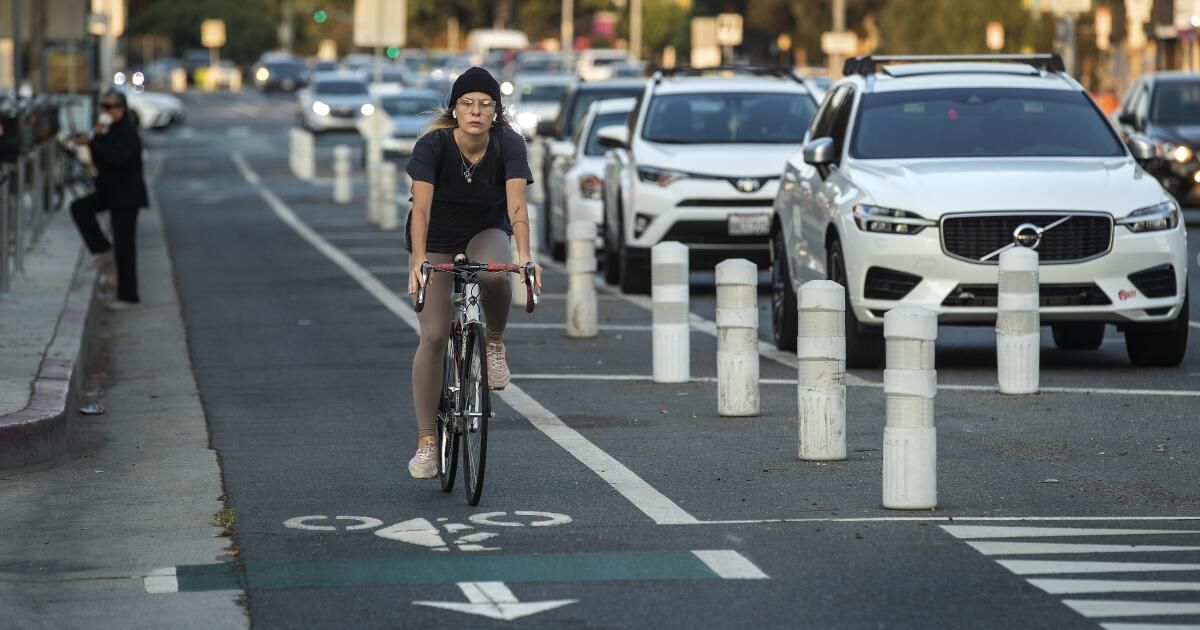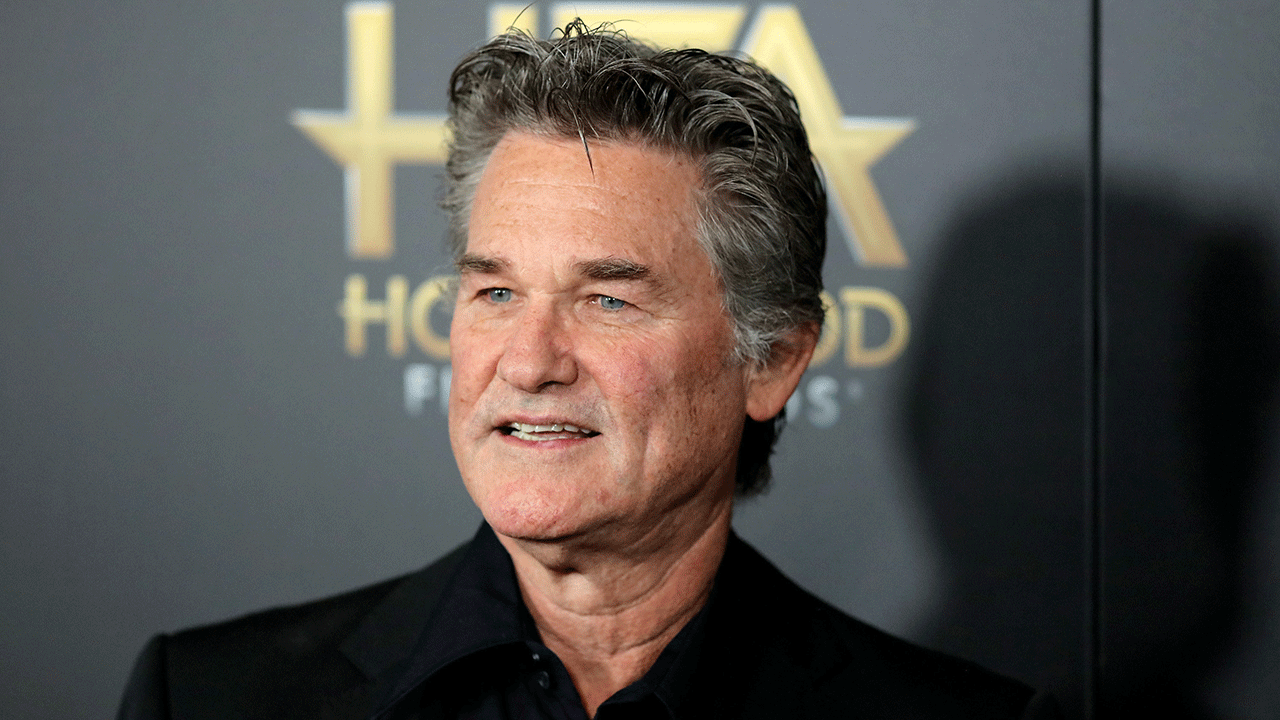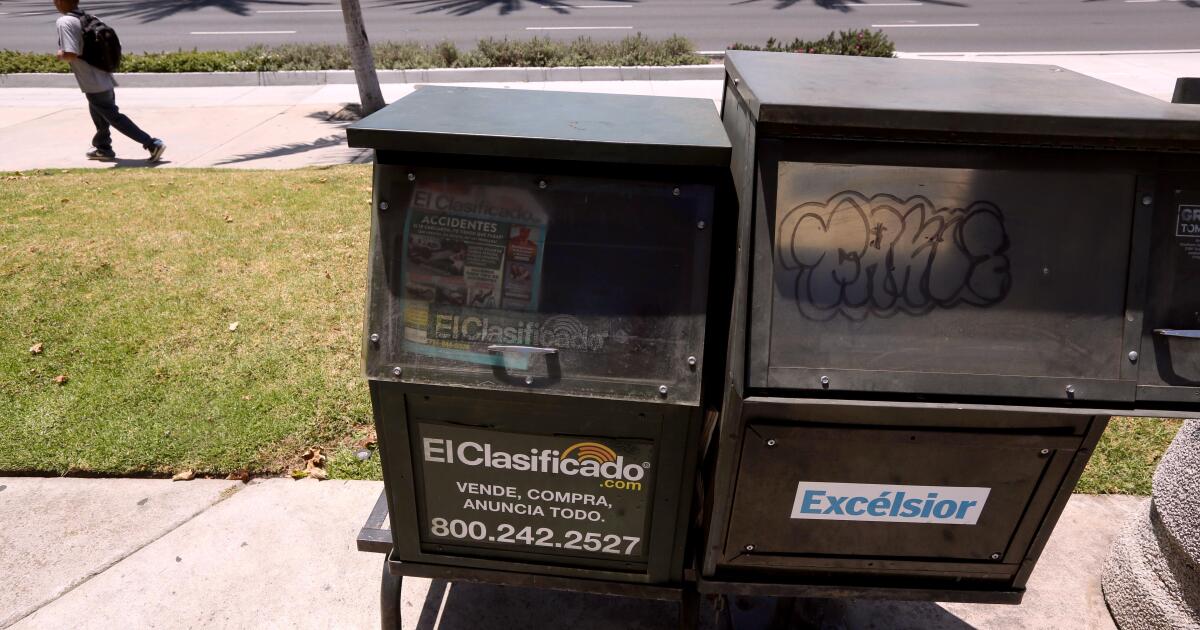With less than three weeks until Los Angeles' municipal elections, City Hall's top budget official said Measure HLA, the ballot proposal to install hundreds of miles of transportation improvements, would cost the city at least $3.1 billion over the next decade.
City Administrative Officer Matt Szabo said the projects required as part of Measure HLA, a proposal on the March 5 ballot, would create new financial obligations without providing additional transportation funds.
Szabo provided his analysis in a new 12-page written report, which served as an update to an earlier lower estimate released last year. Appearing before the City Council on Friday, Szabo said that if the measure passes, city leaders will need to determine whether some construction projects should be shelved to make way for the bike lanes and sidewalk improvements that would be needed.
If the proposal passes, “you will be required to make compensatory decisions and potentially not fund other projects and priorities to meet the mandates of this measure,” he said.
Szabo's report drew a furious response from Streets for All, the advocacy group that created Measure HLA, a proposal to force city leaders to complete transportation projects laid out in the city's Mobility Plan, a planning document approved by council in 2015.
Streets for All, in a flurry of emails, called the report a “last-minute election strategy.” Michael Schneider, who runs the Yes on HLA campaign, also told the council that the city's budget analyst was “playing political games.”
“All we ask is that the CAO stop using taxpayer money to play politics before the election, and let the voters decide if they want to implement the plan… to make our streets safer,” he said.
Councilwoman Eunisses Hernández, who endorsed HLA, expressed her own frustration with the analysis and said the city is doing too little to address the rising number of traffic deaths. Those deaths now exceed the number of homicides, according to last year's statistics.
“This situation here is particularly why I voted no on the budget,” he said. “Because when I think about public safety, safe streets infrastructure is public safety. However, we are here analyzing every detail of this report. We don't look at those billion dollars we just donated. [police] increases.”
HLA supporters have spent weeks attacking Szabo's previous cost estimates for the measure. Szabo, in a financial impact statement prepared for voters last year, said HLA could cost more than $2.5 billion.
Proponents of Measure HLA have strongly disputed that figure, saying it includes more than $1 billion in sidewalk repairs that are not required as part of the ballot measure. They described Szabo's other cost figures as overinflated, saying he relied on “Rolls Royce” versions of transportation projects, rather than less expensive alternatives.
Szabo has defended his office's figures as “conservative estimates.” On Friday he said his latest report did not take into account the increase in construction costs that normally occurs over time. If they had been included, the cost of the traffic improvements would have exceeded $4 billion, he said.
Measure HLA would require the installation of transportation improvements in corridors that are planned for improvements in the Mobility Plan. If city crews perform repairs on an eighth of a mile of one of those streets, then any Mobility Plan improvements planned for that stretch would have to be incorporated into the road work.
Proponents of Measure HLA have said it would bring bus and bike lanes to Ventura Boulevard in the San Fernando Valley. On the east side, they said, the city would add protected bike lanes on Soto Street and Whittier Boulevard. In Hollywood, unprotected bike lanes would be installed on Santa Monica Boulevard, HLA supporters said.
In his report, Szabo estimated that bicycle improvements required as part of Measure HLA would cost about $1.1 billion, while sidewalk improvements would cost another $2 billion. On top of that, community outreach could consume up to $80 million, according to the report.
Councilman Bob Blumenfield attacked Szabo's conclusions, saying he wrongly assumed that the construction projects contained in the Mobility Plan would have to be completed by 2035. The report, he said, “creates a totally artificial 10-year horizon, which appears to inflate the cost.”
Newsletter
Get all the information on Los Angeles politics
Sign up for our Los Angeles City Council newsletter for weekly insights, scoops and analysis.
You may occasionally receive promotional content from the Los Angeles Times.
Szabo said he selected the 10-year timeline because the Mobility Plan was supposed to last until 2035. If the work takes more than a decade, the overall cost of those transportation projects will increase, he said.
Councilman Hugo Soto-Martínez, who has endorsed HLA, also criticized the report, saying the city's handling of the issue had become “incredibly politicized.”
“I have a lot of questions, but I'm not going to ask them,” he said during Friday's meeting. “Because I think that, in my opinion, it feeds into a flawed approach.”
Richard Serrano, a write-in candidate for City Council in the central San Fernando Valley, offered a different opinion, telling council members that Pacoima already has too much traffic congestion.
“We don't have room for bike lanes that a person can ride once a day,” he said. “We need mobility and we need it for cars.”












